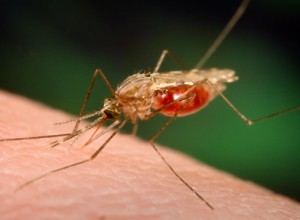Rural Ghana suffers higher malaria prevalence rate despite decline in children – GSS
 Malaria prevalence in children in Ghana has fallen in the past decade, but the incidence of malaria in rural areas is about three times high compared to urban areas, according to the Ghana Statistical Service (GSS).
Malaria prevalence in children in Ghana has fallen in the past decade, but the incidence of malaria in rural areas is about three times high compared to urban areas, according to the Ghana Statistical Service (GSS).
Preliminary findings on malaria in children from the 2022 Ghana Demographic and Health Survey (DHS) released by the Service shows that malaria prevalence in children aged 6 to 59 months is 8.6 per cent according to microscopy results. The malaria prevalence in rural areas at 12.8 per cent is about three times that of urban areas which is 4.3 per cent.
The survey indicates that the Greater Accra region at 2.0 per cent has the lowest prevalence followed by the Western North with 4.4 per cent and the Volta region at 6.4 per cent.
It also found that the regions with the highest prevalence of malaria according to microscopy results are Oti at 15.0 per cent Upper West, 13.4 per cent, and the Upper East, 12.2 per cent.
It states that in all, half of the 16 regions recorded malaria prevalence above 10 per cent.
The survey results also indicate that the prevalence of malaria in children has declined over the past eight years, falling by more than a third from 26.7 per cent in 2014 to 8.6 per cent in 2022.
As part of the efforts to combat malaria, Ghana became the first country in the world to approve a malaria vaccine developed by Oxford University. It was the first time the vaccine has received regulatory approval anywhere in the world. Nigeria has since approved that vaccine.
“The vaccine has been approved for use in children aged 5-36 months, the age group at highest risk of death from malaria,” the university said in a statement.
“It is hoped that this first crucial step will enable the vaccine to help Ghanaian and African children to effectively combat malaria,” it added.
Professor Adrian Hill, chief investigator of the R21/Matrix-M vaccine programme and director of the university’s Jenner Institute, said it marked the “culmination of 30 years of malaria vaccine research at Oxford with the design and provision of a high efficacy vaccine that can be supplied at adequate scale to the countries who need it most.”
Ghana is one of the 11 countries that carry the burden of 73 per cent of the world’s malaria where a child still dies every two minutes.
Four years ago, for the first time in more than a decade, rates of malaria rose in the highest burden countries, while an increasing number of countries had less than 10,000 cases, confirming that progress had been uneven, and that was despite numerous pledges by malaria and non-malaria-affected countries to achieve the Sustainable Development Goals and the global goal of eliminating malaria by 90 per cent by 2030. The major hindrance in achieving that goal had been lack of funding.
In 2021, the World Health Organisation (WHO) estimated that there were 5.3 million malaria cases in Ghana with 12,500 estimated deaths recorded.
By Emmanuel K Dogbevi
Copyright ©2023 by NewsBridge Africa
All rights reserved. This news item or any portion thereof may not be reproduced or used in any manner whatsoever without the express written permission of the publisher except for the use of brief quotations in reviews.
